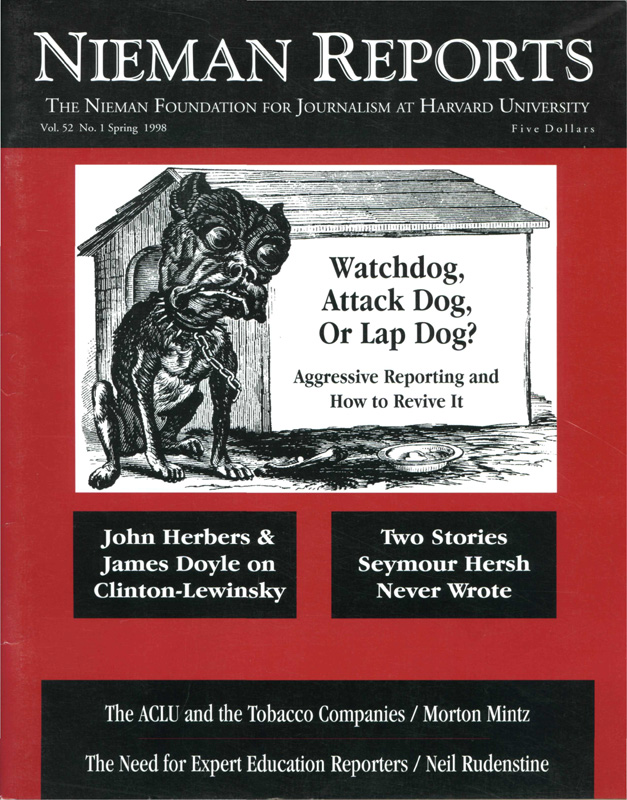LOUISVILLE
To the Editor:
No country in the world can match the United States for extravagant use and waste of its resources. And nothing reveals waste more than our pell-mell pursuit of expensive suburban mobility by over-dosage of highway expansion. We are paving our way to the poorhouse.
It may be too late for bylines, much less by-the-way comments by journalists, to reshape the next wave of Federal highway expansions. Articles in the winter 1997 Nieman Reports offer too few handles for getting beyond tackling “Roads as News Stories” and especially for exposing the not-so-hidden subsidies enjoyed by highwaymen. As Keith Schneider presciently notes: “We haven’t yet paved our way out of congestion.”
Yet reshaping must and can be done with persistent journalistic zest. The impervious if not imperious disregard for non-highway-user publics, the shriveling of mass transit to favor highways, the subsidies offered to suburbia, the damage done to city and countryside by ill-located or extravagantly-expanded highways—all this is still scandalously worthy of more intense journalistic investment and disclosure.
I speak from reportorial experience that intensified when the first Federal concrete was being poured under the Highway Acts of 1949-54. For starters, I examined the Kentucky Turnpike—the first pre-Federal road (built to future Fed-Interstate specs) in this part of the United States.
My first report in a regional arts magazine was headlined, “Gouge, Chop And Rut.” In 1958 I gave a detailed highway critique to a national convention of landscape architects. It was titled, “The Tiger is Through the Gate.”
That same year I wrote—and my newspaper, The Courier-Journal, published—a scathing essay on local highway policies thrusting Interstate 64 through three of Louisville’s major parks designed by Frederick Law Olmsted—to wit, “They stink.” This got top-of-the-op-ed page position, but with an editor’s disclaimer that mine was “not, of course, an editorial expression of this newspaper"—which supported the highway route.
The fact was that our revered, pre-Gannett publisher, Mark F. Ethridge, chaired the Mayor’s Advisory Committee on Interstate Highways. This ensured the newspaper’s editorial support, overriding minority outcry by me and others.
Aside from the sort of difficulties described (in Nieman Reports) in Thomas Palmer Jr.’s excellent account of his coverage of Boston’s Big Dig, it took a delegation to Washington from Louisville—plus a petition with 23,000 signatures—to persuade highway officials to tunnel through, rather than destructively cut open a prominent hill in the city’s Cherokee Park.
The essence of my approach was to inspect, with care (and sometimes with local engineers) the first physical results of policy: How does the thing look—on paper, and on the ground? How does it work? Reporters should get beyond highwaymen who shrug off highway impacts as “minor side effects.”
It is one thing—as Palmer shows—to uncover the oft-concealed cost overruns on major public works. But to get out and personally inspect these huge works, their plans and future sites—and then to anticipate their impacts—that is the next larger dimension that good reporters and their illustrators in all media can and should continue aggressively to explore.
GRADY CLAY
The writer, a Nieman Fellow 1949, is former Urban Affairs Editor, The Courier-Journal.


